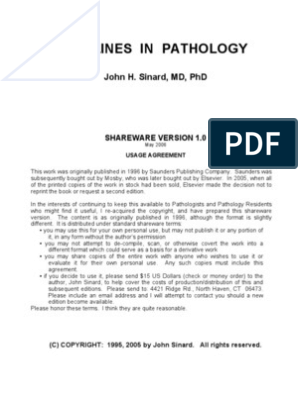0% found this document useful (0 votes)
87 views28 pagesNeuropathology: FK Uisu
This document summarizes several key topics in neuropathology:
1. It describes common findings seen in global hypoxia of the brain such as laminar cortical necrosis and watershed infarcts.
2. It discusses various CNS infections like cerebral abscesses which originate from bloodborne microorganisms and cerebral empyema.
3. It provides an overview of the major classes of brain tumors - gliomas, neuronal tumors, poorly differentiated neoplasms, and meningiomas - and describes characteristics of common types within each class such as astrocytomas, oligodendrogliomas, ependymomas, and medulloblastoma.
Uploaded by
Anggi WahyuCopyright
© © All Rights Reserved
We take content rights seriously. If you suspect this is your content, claim it here.
Available Formats
Download as PPTX, PDF, TXT or read online on Scribd
0% found this document useful (0 votes)
87 views28 pagesNeuropathology: FK Uisu
This document summarizes several key topics in neuropathology:
1. It describes common findings seen in global hypoxia of the brain such as laminar cortical necrosis and watershed infarcts.
2. It discusses various CNS infections like cerebral abscesses which originate from bloodborne microorganisms and cerebral empyema.
3. It provides an overview of the major classes of brain tumors - gliomas, neuronal tumors, poorly differentiated neoplasms, and meningiomas - and describes characteristics of common types within each class such as astrocytomas, oligodendrogliomas, ependymomas, and medulloblastoma.
Uploaded by
Anggi WahyuCopyright
© © All Rights Reserved
We take content rights seriously. If you suspect this is your content, claim it here.
Available Formats
Download as PPTX, PDF, TXT or read online on Scribd
/ 28

























































































